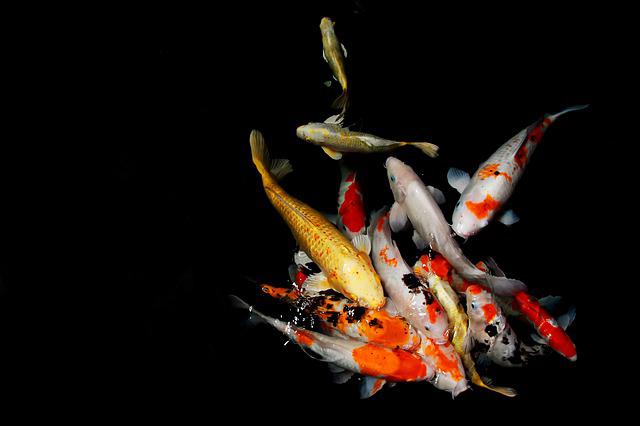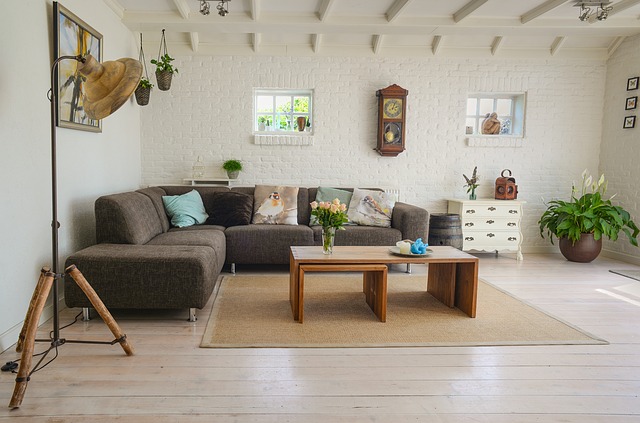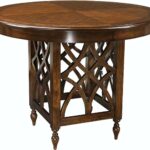Koi are believed to bring wealth and luck. Koi will undoubtedly add a calming presence and a splash of whirling color to your yard, whether this is true or not. Koi require less maintenance because they are resilient fish. For almost immediate yard revitalization, learn how to build a koi pond.
Table of Contents
Establish The Basic Knowledge Of Koi Pond
With a koi pond, you are not only building a garden pond, but also a habitat for creatures. The needs of Koi determine many aspects of the pond itself.
Pool Depth
Although classified as cold water fish, Koi do not necessarily like cold water. They are not suitable in very warm water. Keep the water temperature moderate, from 59 ° f to 77 ° F.
The correct pond depth can help Koi adjust their temperature. Koi pond should be at least 3 feet deep, so Koi can dive and keep cool in summer. If the pond is deep enough, Koi will also be safer from potential predators.
Dimension Of Pond
Big fish need a big pond. For about five Koi, your pond needs at least 1000 to 1500 gallons. Ten or more Koi need double the capacity: more than 3000 gallons.
Imagine a 3000 gallon pond, 18 × 24 feet, 3 feet deep. You still need to maintain a depth of 3 feet when shrinking to a 1000 gallon koi pond, because Koi need deep water. At this depth, the size of the pond should be 6 feet by 8 feet.
Location Of Pond
Choosing the right location for the koi pond is very important for the health of Koi, as well as the water quality and your enjoyment of the pond.
Keep the pond relatively close to the house so that you can bring the water pipe from the tap outside the house to the pond. External power outlets are also provided on one side of the house. Keeping the pond closer helps with regular maintenance.
Consider the balance of sun and shadow throughout the day. Algae grow faster in sunny ponds than in shady ones. For Koi, the water temperature should also be kept moderate.
Security And Permission
Call your local utility location service before mining. Water, gas, electricity and sewage pipelines are at least 12 to 24 inches deep. Considering the depth of the koi pond, there is a great possibility of accidentally bumping into a hidden line.
A permit may not be required for small fountains or garden ponds, but a permit may be required for the size of Koi ponds. Most pipeline and power projects require licenses.
Required Tools/Materials
- Shovel
- Marking paint
- Garden hose
- Tape measure
- Backhoe (optional)
- 45 mil EPDM liner
- 4-inch flexible hose pipe
- 4-inch drain
- Decorative stones
- Settling chamber
- Mechanical surface skimmer
- Biological filters
How To Build A Koi Pond?
Plan A Pond
Choose a pond at least 12 feet (3.7 meters) long and 10 feet (3.0 meters) wide. This is an ideal and popular size backyard, like koi pond. A pond of this size can usually accommodate 10 mature fish, giving them enough space to grow and making the pond look uncrowded.
Keep the width of the pond 13 feet (4.0 meters) or less, otherwise, it will be difficult to catch fish with a net if you need it.
Make your Koi Pond 3-4 feet (0.91-1.22 meters) deep. A good koi pond is 3-4 feet (0.91-1.22 meters) deep. Some Koi ponds used for competitions can reach a depth of 6-8 feet (1.8-2.4 meters). However, for beginners and Koi lovers, there is no need to have a deeper pond.
It is important that the pond be at least 3 feet (0.91 meters) long, as this makes it unlikely to freeze completely in winter.
Once you have determined the size and depth of the pond, you can calculate the estimated volume. To calculate the volume of a pond in cubic feet, multiply the depth by the width and then by the length. To calculate the volume of a pond in gallons, multiply the volume in cubic feet by 7.5. You will need these volume measurements to maintain the water quality of the pond.
Read about: Above Toilet Decor Ideas: Tips Will Help You – Affordable Furniture Today
Choose a convenient location for your Koi pond. Take a walk in your garden and choose where you want to put the pond. Make sure the site is easy to reach so that you can easily bring all the materials of the pond in and have enough space to work.
Some people like to have a koi pond near their home, which can be seen from the window, while others like to set the pond in the garden so that you can walk to it.
Clean up the place where you plan to build a pond. Once you have decided on the size, depth, and location of the pond, prepare the area for your work. Remove plants or furniture that stand in the way. Pull up the paving stones that may cover the ground. Make sure there is enough space around the site so that you can work easily.
Draw the shape of the pond on the ground. Mark the size of the pond directly on the ground. Choose a shape for the pond according to the size you decide. Use ropes, garden hoses, or spray paint to make sure you are satisfied with the size and location of the pond
Koi pond is usually a rectangular, L-shaped polygon, or irregular circle.

Construct Pond
Dig A Pond
Dig the pond to the required depth by hand or hire heavy equipment. Do not create high edges, increase the edges by 5 to 7 inches at each step.
Tips
Due to the large scale of Koi pond, it is strongly recommended that you hire individuals or companies to use excavators or small excavators to dig holes.
Add drainage
Dig a ditch at the lowest point of the pond to drain. Open the hose.
Add pond liner
With the aid of auxiliary tools, unfold the EPDM liner and fit it to the contour of the pond. This is helpful in warm weather because EPDM is more flexible. The liner should extend at least one foot to the shore of the lake.
Added stone
Lay smooth stones along the bottom of the pond. Place larger and flatter stones on the bank to press the edge of the pad. EPDM will deteriorate faster in the sun, so be sure to cover all exposed parts.
Installation sitting room
The drainage pipe of the pond leads to the sedimentation chamber and enters upward. The settling chamber should be on the surface and can be hidden behind plants, rocks, or fences.
Add And Adjust Water
Fill the pond with water. Fill the koi pond with a garden hose. If the water is not fresh or spring water, use a dechlorinator, charcoal filter, or water conditioner to remove chlorine. You can buy these chlorine treatments from ponds or fish supply stores. If there are fish in the pond, be sure to treat the chlorinated water before adding it to the pond.
If you are not sure about the water quality, please contact the water supplier.
Chlorinated water is toxic to Koi and other fish.
Ensure that the pH value of the water is maintained between 7 and 8.6. Use the water test kit to test whether the pH value and dissolved nutrients are at the appropriate level. If the test kit shows that it is necessary to adjust the parameters of the water. This helps Koi keep happy and healthy.
High levels of dissolved nutrients are a common problem. Avoid overfeeding Koi and excessive water in ponds. If necessary, gradually change the water.
If you need to change the water in the pond, it should be 10% – 20% of the total volume. Otherwise, the fish may go into shock.
Keep the temperature of the pond around 65 ° f (18 ° C). Regularly measure the temperature of the pond with a thermometer. If necessary, use pond heaters and aerators. If you find the pond warming, slowly add cold water and slowly reduce the temperature of the pond.
Koi can survive in water at 34-90 ° f (1-32 ° C), but they survive best in water at 65 ° f (18 ° C).
Never change the water temperature of the pond at once, because it will cause Koi shock, which may be fatal.
Introduce Koi To The Pond
First, put the koi in a bag with pond water. Let them adapt for about 15 minutes. Put the bag in the water of the pond and let the fish swim out.
Add only a few fish to the pond at a time, and do not exceed 5-6 fish in the size range of 5-6 inches. This allows your biofilter to adapt to Koi. In the first week or two, pay close attention to the parasites or any biological problems of Koi.
Help tips on how to build a koi pond
Now that you know what it takes to build a koi pond, there are some important tips you should know. First, when you add padding, make sure they are fixed in place with heavy rocks or boulders so that they won’t slide. Your fishing line should extend about a foot beyond the hole you dug for the pond.
Be sure to choose a pump that can handle the capacity of your particular pond, based on its total gallons. The pump should be placed about two inches from the bottom of the pond.
When decorating your pond, avoid using colored rocks, because these contain chemicals that may seep into the water and hurt your fish. Choose natural rocks with smooth surfaces, because Koi like to hide in them and maybe accidentally cut by sharp-edged rocks.
Understand the life and habits of Koi so that you can give them the care they need. Build a larger pond than you think you need because these fish can grow to very large and will need enough space to maneuver.
If you are worried that predators will try to eat your fish, install a net cover on the top of your pond. Once everything is installed and the water is ready, add your fish and enjoy your new, beautiful addition to the backyard!
Conclusion
Beautiful ornamental fish called koi have a long life span under ideal circumstances. It may seem tough to build your own koi fish pond in your garden, but with enough preparation and persistence, it won’t take too long! Prior to digging the hole and lining it with a pond liner, determine the size and depth of the pond. To maintain the koi happy and healthy, install all the required tools, such as a filtration system and an aerator.













